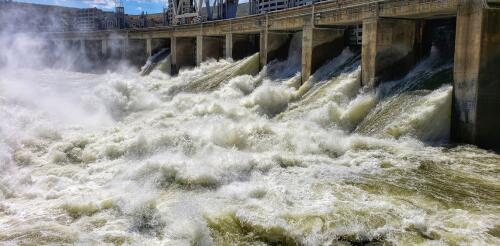Climate change
Green banks are starting to draw attention in the U.S., particularly since the federal government announced its first grant competitions under a national green bank program to bring clean technology and more affordable energy to low-income communities. But installing more solar and wind electricity generation isn’t the only way green banks can help. Massachusetts is launching an innovative new green bank that could become a model as states try to manage two crises at once: lack of affordable housing and climate change. While most green banks focus on clean energy, the Massachusetts Community Climate Bank is specifically designed to boost the state’s stock of sustainable, affordable housing. It comes at an opportune time: States can now tap into billions of dollars in new federal funding for green banks under the Inflation Reduction Act. So what exactly is a green bank, and how might it work for sustainable housing? What is a green bank? Despite the name, green b...
In the U.S., most consumers take clean and available fresh water for granted, and water usually becomes front-page news only when there’s a crisis. And the past year has seen its share of water-related crises, whether it’s the effects of a prolonged drought in the U.S. Southwest or floods that covered more than one third of Pakistan last year. But seeing water problems as only environmental disasters does not capture the deeply interconnected nature of water in our society. To mark the release of the book “The Conversation on Water,” a collection of previously published articles on water, The Conversation hosted a webinar with experts with a range of expertise and different perspectives on water issues and potential solutions. The edited text and video clips below convey one or two of the key points each speaker made. The full webinar is available on YouTube. Indigenous scholar Rosalyn LaPier explains Native Americans’ e...
Extreme heat has been breaking records across Europe, Asia and North America, with millions of people sweltering in heat and humidity well above “normal” for days on end. Death Valley hit a temperature of 128 degrees Fahrenheit (53.3 degrees Celsius) on July 16, 2023 – not quite the world’s hottest day on record, but close. Phoenix broke a record heat streak with 19 straight days with temperatures above 110 F (43.3 C), and had more in the forecast, accompanied by several nights that never got below 90 F (32.2 C). Globally, Earth likely had its hottest week on modern record in early July. Heat waves are becoming supercharged as the climate changes – lasting longer, becoming more frequent and getting just plain hotter. One question a lot of people are asking is: “When will it get too hot for normal daily activity as we know it, even for young, healthy adults?” The answer goes beyond the temperature you see on the thermometer. It’s...
You’ve just finished a cup of coffee at your favorite cafe. Now you’re facing a trash bin, a recycling bin and a compost bin. What’s the most planet-friendly thing to do with your cup? Many of us would opt for the recycling bin – but that’s often the wrong choice. In order to hold liquids, most paper coffee cups are made with a thin plastic lining, which makes separating these materials and recycling them difficult. In fact, the most sustainable option isn’t available at the trash bin. It happens earlier, before you’re handed a disposable cup in the first place. In our research on waste behavior, sustainability, engineering design and decision making, we examine what U.S. residents understand about the efficacy of different waste management strategies and which of those strategies they prefer. In two nationwide surveys in the U.S. that we conducted in October 2019 and March 2022, we found that people overlook waste reduction and reuse...
As rising global temperatures make extreme storms more common, the nation’s dams and reservoirs – crucial to keeping communities dry – are being tested. Storms in the U.S. Northeast stretched the region’s flood control systems nearly to the breaking point in July 2023. California and states along the Mississippi River faced similar flood control challenges in 2023. Managing these flood control systems is a careful balancing act. Do managers release water to make room for the storm’s runoff, increasing the risk of flooding downstream, or hold as much as possible to protect downstream farms and communities, which could increase the chance of larger floods if another storm comes through? The earlier decisions can be made, the better the chance of avoiding downstream damage. But forecasts aren’t always reliable, and waiting for the rain to fall may mean acting too late. Satellite water vapor imagery from July 9-11, 20...



